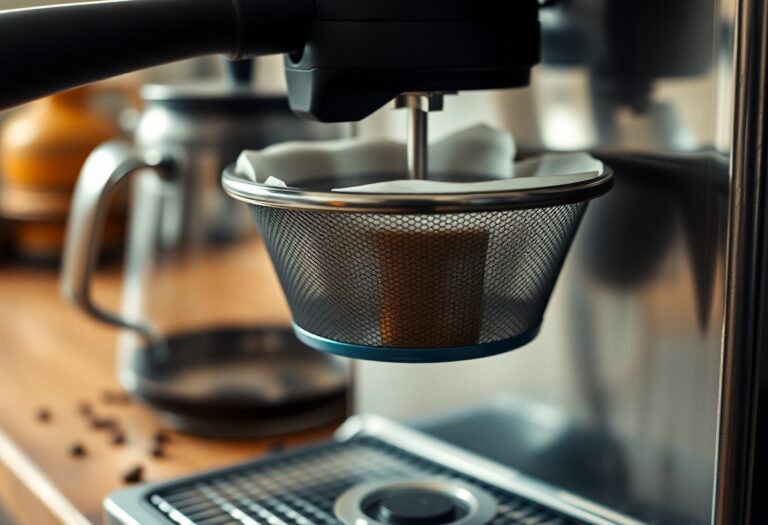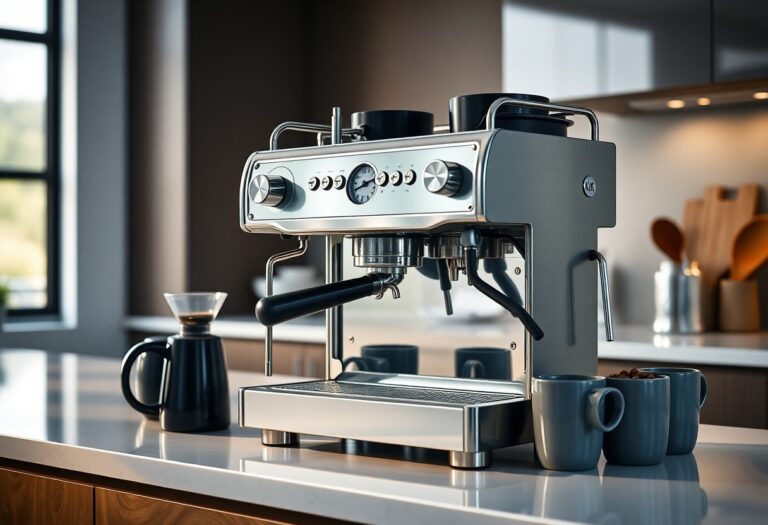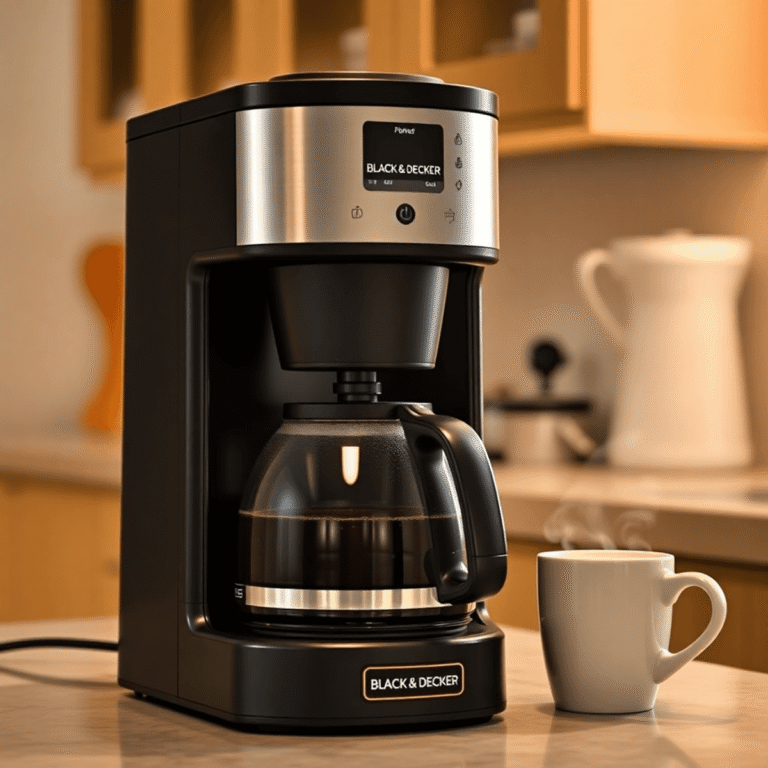What Coffee is Good for Espresso Machine – Quality Selection
Many coffee lovers aspire to make the perfect espresso at home, but choosing the right coffee beans can significantly affect your results. Freshness and grind size are necessary factors, as well as the roast profile that suits your taste. To truly elevate your espresso experience, you should select high-quality, specialty-grade beans, preferably single-origin for a refined flavor. This blog post will guide you through the selection process, ensuring your espresso machine produces rich, satisfying shots that impress your palate and guests alike.
Key Takeaways:
- Choose coffee beans that are specifically labeled for espresso to ensure optimal flavor and pressure extraction.
- Single-origin beans often provide unique flavor profiles, while blends can deliver a balanced taste and consistency.
- Freshness is key; look for beans roasted no more than two weeks prior to purchase for the best espresso experience.
- Grind size matters; a fine grind is typically recommended for espresso machines to achieve proper extraction.
- Pay attention to the roast level; medium to dark roasts are commonly preferred for their rich flavors and creamy texture in espresso.
Decoding Espresso Beans: Factors That Matter
Several factors influence the selection of the best coffee beans for your espresso machine. Start with the bean origin, as different regions yield distinct flavor profiles. Arabica beans are known for their smooth, complex flavors, while Robusta often delivers a robust, earthy taste with higher caffeine levels. Freshness also plays a crucial role; beans that have been roasted within the past two weeks typically yield better results. Be aware of the grind size, as finer grinds extract flavors more intensely, impacting your final espresso shot. The quality of your beans will significantly dictate the outcome of your espresso experience, so choose wisely.
Coffee Bean Varieties: The Flavor Spectrum
Your choice of coffee bean variety significantly shapes the flavor spectrum of your espresso. Varieties such as Geisha, known for floral notes, and Typica, which offers a rich sweetness, cater to diverse palates. Each unique variety brings nuances that can enhance or change the experience of your espresso. The right combination can lead to a delightful journey through flavors, making it imperative to experiment and discover the options that resonate with your taste preferences.
The Role of Roast Profiles in Espresso Quality
The roast profile dramatically impacts your espresso’s quality. Light roasts preserve acidity and brightness, enhancing complex flavors, while medium roasts balance acidity and sweetness, providing a more rounded flavor. Dark roasts tend to emphasize bitterness and body, which can mask subtle flavors. Finding the perfect roast profile can elevate your espresso shots, influencing both aroma and taste. Additionally, each roast brings unique oils to the surface as the beans cool, which can contribute to the crema—the golden layer atop your espresso that enhances the overall experience. Exploring various roast profiles offers an opportunity to refine and enhance your brewing mastery.
The Perfect Grind: Unlocking Espresso Potential
Achieving the ultimate espresso experience necessitates mastering the grind size of your coffee beans. An ideal grind produces a rich, flavorful extraction while maintaining the right balance of taste and aroma. Espresso’s concentrated nature demands a meticulous approach, as even the slightest change in grind size can dramatically alter the extraction process, ensuring you unlock the full potential of your coffee.
Grind Size vs. Extraction: Finding the Balance
Finding the right grind size for your espresso involves understanding the relationship between grind and extraction time. A finer grind increases surface area, allowing for quicker extraction, which amplifies the espresso’s bold flavors. Conversely, a coarser grind leads to slower extraction and potentially underwhelming results. Achieving a harmonious balance ensures that each shot delivers the unforgettable layers of flavor espresso aficionados crave.
The Science of Freshness: Why Grind Matters
Grinding your beans just before brewing enhances flavor and aroma, making a tangible difference in your espresso experience. The moment coffee is ground, it begins to lose its volatile compounds, which contribute to aroma and taste. To fully appreciate the nuances in your chosen beans, grinding them fresh ensures optimal extraction during brewing.
To illustrate the significance of grinding fresh, consider that coffee beans contain around 800 volatile compounds that can dissipate within minutes of being ground. If you grind coffee and let it sit, you’re losing critical flavor notes, such as acidity and fruity undertones. For the best espresso experience, invest in a burr grinder; it produces a uniform grind size, maintaining consistent extraction and ultimately enhancing the coffee’s complexities. Freshly ground beans not only taste better but also provide a sensory experience that pre-ground coffee fails to offer.
Brewing Techniques: Harnessing the Power of Your Machine
Understanding how to use your espresso machine to its fullest potential allows you to create that ideal cup in no time. Pay attention to the grind size, tamping pressure, and extraction time. Adjusting these variables can transform a mediocre shot into a masterpiece, as each machine behaves slightly differently. With practice, you’ll discover the optimum settings that bring out the best in your selected beans, ensuring a rich, full-bodied, and aromatic espresso that caters to your palate.
Essential Brewing Parameters for Optimal Taste
For a balanced, full-flavored espresso, aim for a brew ratio of 1:2, where you extract roughly twice the weight of the coffee grounds used. Ideal brew time hovers between 25 to 30 seconds, and the water temperature should be around 195°F to 205°F. Tamping should be firm but even to avoid channeling, which compromises extraction. Adjust these parameters based on your preferences, as even the slightest change can make a world of difference to your final product.
Common Mistakes: What to Avoid in Espresso Making
Over-extraction and under-extraction are two of the most common pitfalls in espresso making. You may find yourself pulling bitter shots due to excessively long brew times or weak, sour espresso from insufficient extraction. Keeping the grind size consistent, tamping evenly, and utilizing fresh beans are crucial steps to avoid these mistakes. Remember that quality equipment also plays a vital role; using a worn-out machine can lead to frustrating inconsistencies and disappointments.
Many enthusiasts unknowingly fall into the trap of ignoring cleaning and maintenance, which can affect taste and machine performance. Neglecting to remove coffee oils and residue can lead to rancid flavors, while a poorly calibrated machine will struggle to create the optimal pressure needed for a perfect shot. Consistently clean your machine, calibrate settings, and ensure fresh beans are at hand to maximize your espresso experience and avoid these common missteps.

Tasting Espresso: Developing Your Palate
Exploring the world of espresso opens up a realm of flavors and aromas that often goes unnoticed. As you indulge in this rich experience, you’ll find that developing your palate enhances your appreciation for different coffee beans, roast levels, and brewing techniques. Each sip contains a story of its origin, inviting you to dive deeper into what makes each espresso shot unique.
Identifying Flavor Notes and Aromas
To truly savor your espresso, start by observing its aromas, which can range from fruity and nutty to earthy and spicy. These scent profiles form the foundation of what you’ll taste. An espresso made from high-quality beans often reveals distinct flavor notes like chocolate, citrus, or caramel. By taking a moment to breathe in these aromatic qualities, you’re preparing your palate for a full tasting experience.
The Art of Espresso Tasting: Techniques for Evaluation
Evaluating espresso involves various techniques to dissect its elements. Begin with a visual inspection of the crema—its richness and color indicate the coffee’s quality. Slurp a small amount to aerate it across your palate, making it easier to pick out complex flavors. Pay attention to the body, brightness, sweetness, and aftertaste to grasp the espresso’s overall profile, rewarding you with a richer understanding of what you’re drinking.
Utilizing the right techniques can transform your espresso tasting into an enlightening experience. Focus on the body of the espresso; a heavier body often stems from a darker roast, whereas a lighter roast may present a more delicate feel. Observe the brightness, which can range from smooth to vibrant, affecting how the flavor unfolds on your tongue. Sweetness balances bitterness, often a marker of good quality beans, while the aftertaste adds a lingering note that can enhance the overall enjoyment. Regularly practicing these techniques will gradually help you discern the unique aspects of each espresso shot, making you a more attuned aficionado.

Navigating the Coffee Market: Quality vs. Price
Finding the right balance between quality and price requires a discerning eye. High-quality beans don’t always come with a hefty price tag, yet some brands charge more simply for their reputation. To explore how to make informed decisions about espresso coffee, check out this Guide To Espresso. The goal is to identify beans that offer exceptional flavor profiles and craftsmanship, ensuring that your investment translates to a rewarding espresso experience.
What to Look for in Quality Espresso Beans
When choosing quality espresso beans, focus on origin, roast date, and blend type. Single-origin beans often highlight distinct flavor notes unique to their region, while blends can provide a harmonious balance. Always check the roast date to ensure freshness; beans lose their flavor over time. Look for specialty coffee labels with cupping scores above 80, which typically indicate superior quality.
Debunking Myths: Price Tags and Real Value
Dispelling the misconception that higher prices always guarantee better quality is vital. Many affordable options offer great taste and brewing consistency. Value is determined by factors like roasting techniques and bean quality, not just price. A $20 bag of beans may outperform a $40 one if sourced and roasted skillfully.
Understanding the relationship between cost and quality is vital in your coffee journey. For instance, artisanal roasters apply meticulous methods in selecting and processing beans that elevate their flavor, justifying a higher price point. However, you can discover budget-friendly options that may surprise you, showcasing vibrant flavor profiles without the premium price tag. Balancing your budget with a willingness to experiment will lead to a rich espresso experience over time.
Conclusion
With this in mind, selecting the right coffee for your espresso machine is vital for crafting the perfect shot. You should consider factors such as bean origin, roast level, and grind size to match your taste preferences. For a reliable starting point, explore options like 13 Store-Bought Espresso Coffee Brands, Ranked, which can guide you in finding your ideal blend. Fine-tuning your coffee selection will enhance your espresso experience and leave you savoring every cup.
FAQ
Q: What type of coffee beans are best for espresso machines?
A: The best coffee beans for espresso machines are typically Arabica or a blend of Arabica and Robusta. Arabica beans offer a smoother taste with complex flavors, while Robusta beans provide a stronger, more bitter flavor and a higher crema production. Many espresso aficionados prefer a darker roast, which highlights the rich flavors and enhances the crema, but experimenting with lighter roasts can also yield interesting preferences.
Q: Should I choose single-origin coffee for my espresso machine?
A: While single-origin coffees can showcase unique flavor profiles, they can sometimes lack the balance desired for a traditional espresso shot. Many espresso blends are formulated to create a harmonious taste experience by combining beans from various regions. If you enjoy trying different flavors, using single-origin coffee is an excellent way to discover new notes, but blends often offer the consistency required for pulling espresso shots.
Q: How finely should I grind my coffee for espresso?
A: The grind size for espresso should be very fine, almost resembling powdered sugar. This fine grind allows for optimal extraction of flavors during the brewing process. If the grind is too coarse, the water will pass through too quickly, and the espresso can taste weak. Conversely, if the grind is too fine, it can lead to over-extraction, resulting in a bitter taste. It’s necessary to adjust the grind based on your specific espresso machine and personal taste preferences.
Q: How fresh should the coffee beans be for brewing espresso?
A: Freshness plays a significant role in the flavor of your espresso. Coffee beans are best used within a month of roasting for optimal taste. After opening a bag, it’s recommended to consume the beans within two weeks to prevent flavor loss. Store your beans in an airtight container away from light, heat, and moisture to maintain their freshness as long as possible.
Q: What factors should I consider when selecting coffee for an espresso machine?
A: When identifying coffee for an espresso machine, consider the roast type (typically medium to dark), the origin (blends often provide balance), grind size (fine for optimal extraction), and freshness (ideally used within a month of roasting). Additionally, personal taste is vital; trying various beans will help you find your preferred flavor profiles and characteristics. Pay attention to the label for any tasting notes, as they can guide your selection based on desired flavors.







